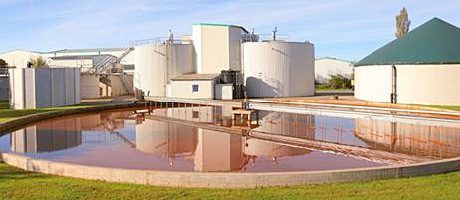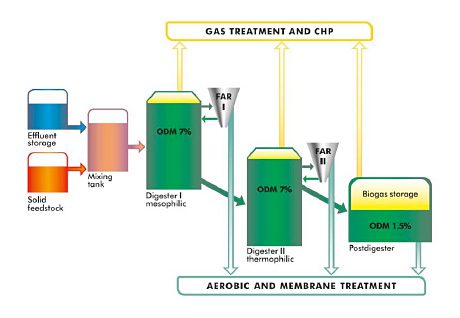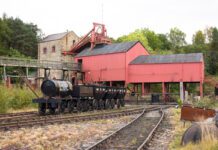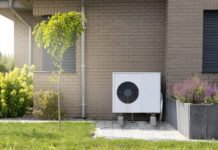Biogas Case History –

Customer
Since 1972, Meyer Vegetable at Twistringen in Germany has evolved from a farm-based company to a medium-sized supplier of processed fresh and frozen vegetables. Currently this ever-expanding family-owned company processes about 60,000 tonnes of vegetables annually. Processing at Meyer Vegetable includes: cleaning, hulling, sorting, cutting, chilling, packing and labelling. The company also has one of the largest refrigerated warehouses in Northern Germany. This production results in about 100 m³ of waste water and about 45 to 50 tonnes of solids daily, mostly peels and wastes from potatoes, carrots and beans.
Challenge
In 2007 the company’s owners decided to tackle the problem of liquid and solid waste, increasingly difficult and expensive to discharge. The investors emphasised that the plant should fulfil the dual purposes of treating the industrial effluent generated on site to very high standard, thereby permitting either reuse in its operations, or a direct discharge, whilst at the same time utilising the organic load of solid residues in the most efficient way.
Further challenges included:
Relatively large feedstock volumes. Using a typical completely mixed digester with hydraulic residence time of >20 days would result in vast reactor volumes with high investment and operating costs.
Flexible operation due to the variable level and seasonal nature of production. Provisions for easy expandability to be included.
The contract was awarded to the SH+E Group because of our very substantial experience in the development of novel solutions for wastewater treatment and biogas production.
Innovative solution
The plant includes:
Mesophilic and thermophilic digesters in series, for better degradation of biosolids. Hydraulic retention time of just 10 days.
Aerobic H2S removal, by injection of a small amount of air into the gas stored in digester and post- digester.
Electricity generation using CHP.
Aerobic SBR for liquid fraction treatment.
Sand filtration, mass algal culture, ultrafiltration and reverse osmosis processes for purification of effluent for discharge or process water quality.

The block diagram shows the process flow and organic dry matter (ODM) content of individual tanks in the plant. The significant decrease in volume of the digesters & much lower ODM content in the digestate compared with typical CMR reactors were achieved by including an innovative FAR element.
The operating method can be further optimised to increase gas yields through the use of dynamic simulation. The SH+E Group has excellent qualifications for this work as one of the leading service providers in the dynamic simulation sector in Germany over the last few years.
Conclusion
The benefits of the plant are best summarised in the operator’s own words:
“Thanks to the innovative concept of this system, we can take advantage of our solid and liquid wastes from the vegetable processing for CO2-neutral energy production, minimise the sludge applied to agricultural land and simultaneously treat the process water in accordance with discharge quality requirements, as well as re-using some as process water in the factory.”
+44 1403 272772, sales@she-group.co.uk






